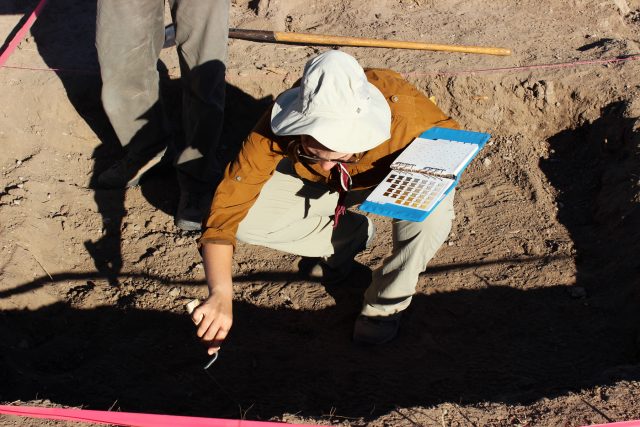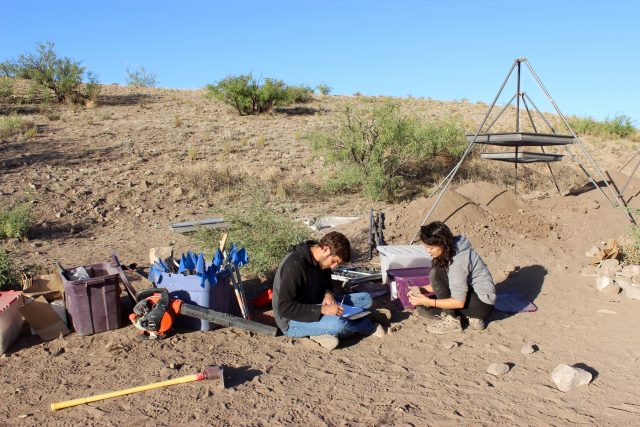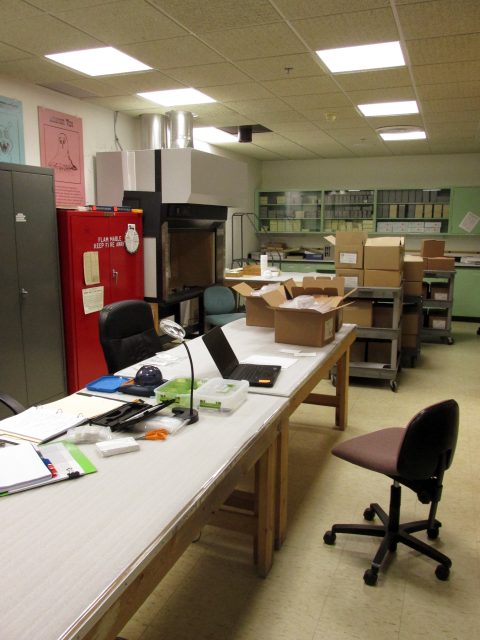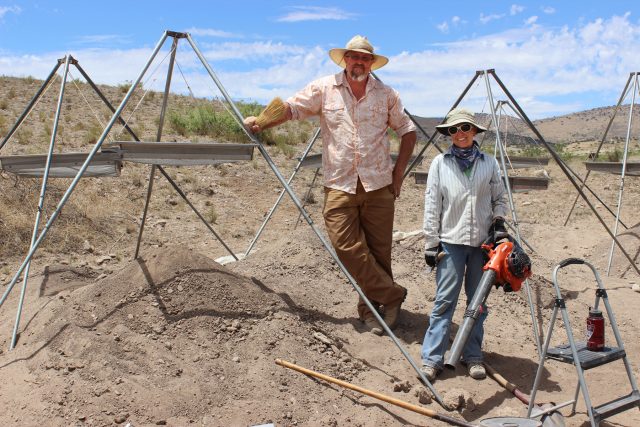- Home
- >
- Preservation Archaeology Blog
- >
- Facts, Biases, and How We Sift through Them

(January 27, 2016)—As you know if you read this blog often, archaeologists instinctively draw on our training in anthropology and our studies of the past when we’re trying to understand the complexity of today’s world. To my surprise, an episode in the development of anthropological theory I struggled with as a student has become very relevant lately: how can we recognize facts when human beings all have biases? Are there things we can objectively measure to resolve important questions, or must we rely on individual opinions alone?
When I was a college student in the mid-1990s, our field was being rocked by debates over just that, and I was thrown into this intellectual whirlpool without a life preserver. For decades, archaeologists (with other anthropologists) had attempted to approach our work the way “hard science” did—gathering a representative sample of numerical data points and then interpreting them with statistical methods developed by those other sciences.

Processualism, as this approach was called, stated that if we adhered to the hard sciences’ definitions of the scientific method, we would come to entirely objective conclusions. It was well intentioned and worked very well sometimes, but if we followed this ideology too dogmatically, we ran into trouble.
For example, if an archaeological survey aimed at studying ancient villages in the Southwest attempted to collect a truly random sample of site locations on a given landscape, it would end up surveying many, many blocks of land (such as steep slopes, or high peaks too cold for maize agriculture) that contained very few of the sites those archaeologists were actually interested in, and not covering enough of the low terraces along rivers where we already knew perfectly well the highest numbers of sites were located.
Though delightfully scientific in its randomness, such a survey would fail to gather much information about archaeological sites. Of course, there were ways to correct this, but when people were too dogmatically processual, their research often suffered. Overzealous processualism also sometimes clouded the questions we could address; counting “stuff” was allowed, but discussing how the symbols on those items might have carried meaning to those who used them could be dismissed as unscientific—and thus unworthy of our attention.
By the late 1980s, a growing number of anthropologists were reacting against what was seen as a false belief in the impartiality of science. The theoretical approach they favored, postmodernism argued that our biases and beliefs prevented us from making truly impartial interpretations of our data. As we collected data, the attributes we chose to focus on and the interpretations we came up with would reflect our preconceived ideas of what we’d find, not the objective reality processualists thought they were getting at.
Some of postmodernism’s criticisms were right on the money. Among other things, the archaeological version of this theory (called postprocessualism) helped us break away from a simplistic focus on people’s “stuff” and include studies of ancient symbols and their meaning, and it did help us better recognize biases in our interpretations. But if we followed this theory too dogmatically we ran into trouble—again.

Carried to an extreme, postmodernism led some to posit that the only version of “reality” any of us could study was the one in our own heads. The acknowledgment that all of us have biased views of the world made some scholars focus so heavily on that bias, they rejected the very existence of facts and data. One of my best friends in college wrote an honors thesis and was assigned a well-meaning but naïve graduate student mentor who kept insisting she include a section discussing her gender bias in her thesis. That thesis was on wall construction and the types of stone used during different building phases of an ancient ceremonial complex—not a topic in which gender bias is a serious impediment.
When I went so far as to raise my hand during one memorable class discussion to say that I thought some things—like the effects of gravity, or what kind of stone is in a building—are the same no matter who is doing the measuring, my classmates shot me dirty looks and just started talking about Marxism again. Feeling alienated, I attempted to avoid taking any more theory classes.
The argument that objective facts do not exist—that a person’s biases and worldview color their perceptions so much that agreeing on what is real is impossible—seems to be on the upswing again these days. The direction archaeological theory took next can help us grapple with this.

I emerged from my undergraduate years with the (mistaken) impression that postmodernism meant being anti-science. Fortunately, one of my graduate school mentors, Dr. Michelle Hegmon, was one of those at the forefront of finding ways to include postmodernism/postprocessualism’s valuable work on bias within more traditionally scientific approaches acknowledging that there is, in fact, a real physical world out there we can measure.
If we’re careful in our work, we can count and measure things accurately, collecting data that—while consisting only of the attributes we chose to record, a bias we acknowledge—at least show those attributes correctly. We then use those data to make interpretations about the past, keeping our own biases in mind and consciously trying to ensure that they aren’t skewing our findings.
In short, recognizing bias without deciding reality is unknowable. When our academic articles are sent out for peer review, a group of other experts—from which our biased best friends and worst enemies have been removed—evaluates them and looks for places where we’ve failed to collect data or facts correctly, neglected to pursue an alternative explanation for a pattern, or otherwise failed to account for our biases. If they find evidence of this, our articles are rejected.
Michelle calls the approach many archaeologists now use “processual-plus,” an improved version of traditional archaeological research that melds the best of processualism’s scientific approaches with the useful critiques of post-processualism. This is the approach that made me finally stop avoiding theory courses in graduate school.
Understanding today’s complex world means we must all act like peer reviewers. We can all recognize when we’re drawn to an interpretation because it supports something we already believe, and try to improve the skepticism we apply to that interpretation. We can all recognize when we’re tempted to ignore an interpretation just because it runs against our biases. We can all ask for accurate data—numbers collected by a source that’s been carefully scrutinized by those with a stake in measuring and reporting facts accurately and truthfully.
Archaeology’s theoretical journey shows us a path to limiting the ways in which our biases and preconceptions interfere with understanding what really happened in the past. Moving forward does not mean rejecting the idea that anything is real, or that facts are verifiable. It means acknowledging our biases, and recognizing the biases of others. It means ensuring that data—facts—are collected carefully, and that multiple interpretations are weighed against each other in light of those facts. That isn’t always easy, but answering hard questions is what science is all about.

One thought on “Facts, Biases, and How We Sift through Them”
Comments are closed.
Explore the News
-
Join Today
Keep up with the latest discoveries in southwestern archaeology. Join today, and receive Archaeology Southwest Magazine, among other member benefits.
This fascinating evolution is just commencing in the emerging field of data science that I study here at Harvard University. Have you written about “subjective” interpretations.
I found this following a discussion with an archeologist at the Museum of Archeology in Athen, last week.